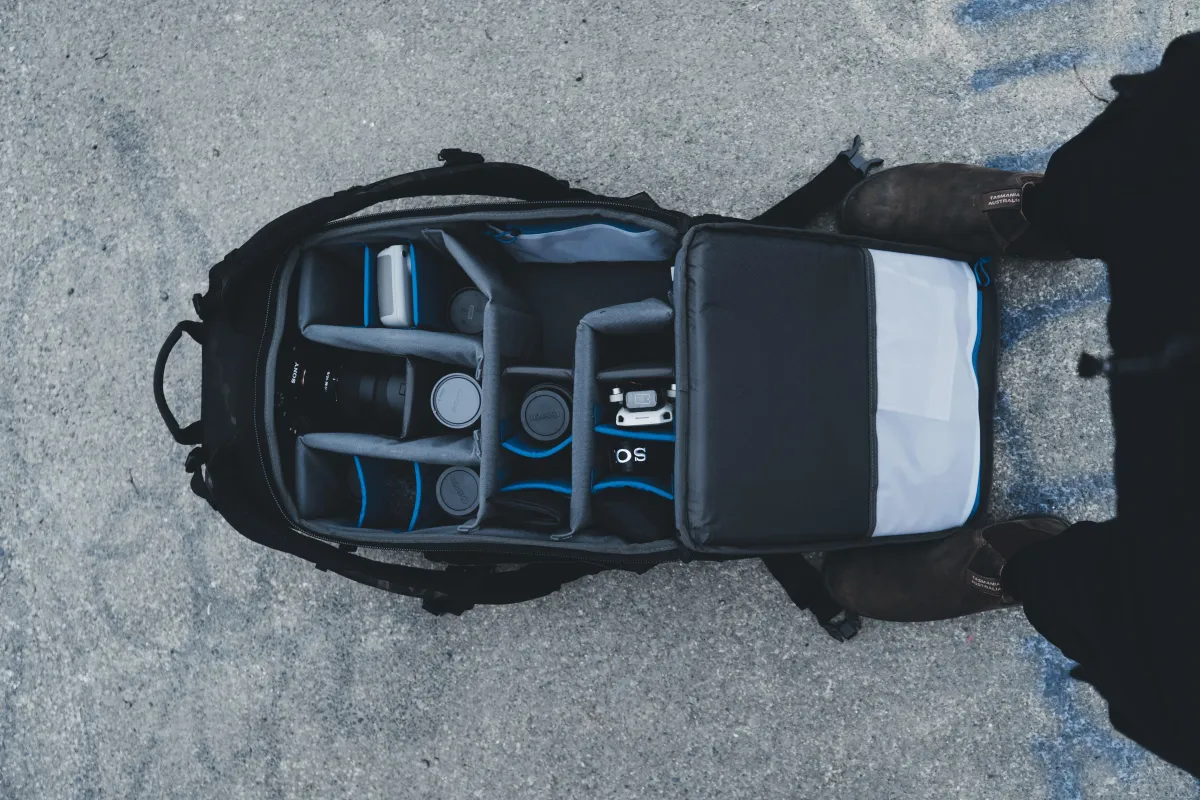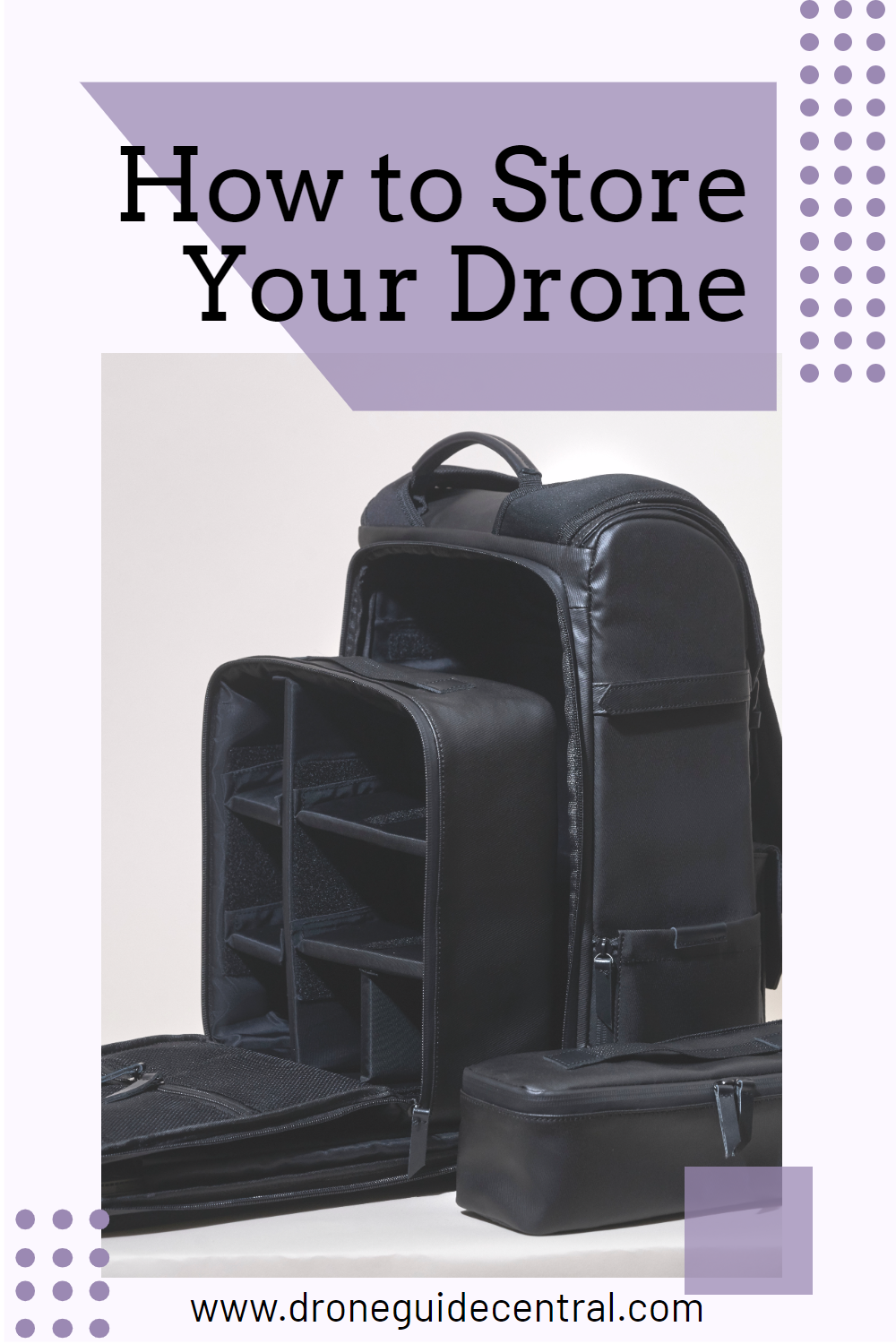
How to Store Your Drone
Proper storage is essential for maintaining the condition and performance of your drone during periods of non-use. Follow these best practices on how to store your drone, to ensure your drone remains in optimal condition while in storage.
How to Store Your Drone:
1. Choose a Suitable Storage Location
Select a clean, dry, and well-ventilated area for storing your drone.
Avoid locations prone to temperature extremes, excessive humidity, or direct sunlight, as these conditions can degrade components and batteries.
2. Use a Protective Case or Bag
Invest in a dedicated drone case or bag to provide cushioning and protection against impacts during storage and transport.
Ensure the case or bag is properly padded and has compartments to securely hold the drone, batteries, accessories, and other components.
3. Remove the Battery
Always remove the drone's battery before storing it to prevent potential damage from leakage or over-discharge.
Store the battery in a cool, dry place away from direct sunlight and flammable materials.
4. Inspect and Clean the Drone
Before storing the drone, conduct a thorough inspection to check for any damage, loose parts, or signs of wear.
Clean the drone, propellers, and other components to remove dirt, dust, and debris that could cause damage or affect performance during storage.
5. Securely Stow Propellers and Accessories
Remove propellers and any detachable accessories, such as camera gimbals or landing gear, before storing the drone.
Store propellers and accessories in designated compartments within the storage case or bag to prevent loss or damage.
6. Protective Covers for Motors and Sensors
Consider using protective covers or caps to shield the drone's motors, sensors, and other exposed components from dust and debris during storage.
Ensure these covers are properly fitted and securely attached to prevent them from dislodging during transport or handling.
7. Keep Firmware Updated
Before storing the drone, ensure its firmware is up to date. Click here to learn how to use DJI Assistant 2.
Check for any available updates and install them to ensure optimal performance and compatibility with future flights.
8. Regular Maintenance Checks
Schedule periodic maintenance checks even during storage periods to ensure the drone remains in good condition.
Conduct routine inspections of the drone's components, including the frame, motors, and electronics, to identify any potential issues.
Check for signs of corrosion, rust, or moisture accumulation, particularly in areas exposed to environmental elements.
Inspect wiring, connectors, and solder joints for signs of wear or damage that may require repair or replacement.
Rotate and charge batteries periodically to maintain their health and prevent degradation from prolonged storage.
9. Implement Safe Handling Practices
When handling the drone during storage or retrieval, use caution to avoid dropping or mishandling it, which could cause damage.
Always hold the drone securely, supporting it from underneath to prevent accidental drops or falls.
Avoid placing heavy objects on top of the storage case or bag to prevent crushing or damaging the drone and its accessories.
10. Monitor Storage Environment
Regularly monitor the storage environment for changes in temperature, humidity, or other environmental factors that could impact the condition of the drone.
Take appropriate measures to address any adverse conditions promptly, such as using dehumidifiers or relocating the storage area if necessary.
Conclusion
By following these storage best practices, you can help prolong the lifespan of your drone and ensure it remains in optimal condition for future flights. Proper storage not only protects your investment but also contributes to safe and enjoyable flying experiences.
FAQ: How to Store Your Drone
1. Why is it important to remove the drone's battery before storing it?
It's crucial to remove the drone's battery before storage to prevent potential damage from leakage or over-discharge. Storing batteries separately in a cool, dry place helps maintain their health and prevents potential safety hazards.
2. How often should I conduct maintenance checks on my drone during storage periods?
It's advisable to conduct maintenance checks on your drone periodically, even during storage periods. Checking every few weeks ensures that any issues are identified early, allowing for timely repairs and maintenance to keep the drone in optimal condition.
3. What are some signs that indicate the need for immediate maintenance or repair during storage?
Signs such as corrosion, rust, or moisture accumulation on the drone's components indicate potential issues that require immediate attention. Additionally, any visible damage, wear, or degradation should be addressed promptly to prevent further deterioration.
4. Can I store my drone in its carrying case for an extended period?
Yes, you can store your drone in its carrying case for an extended period, provided that the case offers adequate protection against environmental elements and physical damage. However, it's essential to periodically inspect the drone and its components to ensure they remain in good condition.
5. How can I protect my drone from environmental factors such as temperature extremes and humidity during storage?
To protect your drone from environmental factors, store it in a clean, dry, and well-ventilated area away from temperature extremes and excessive humidity. Using desiccants or moisture-absorbing packets in the storage area can help maintain optimal conditions for the drone. Additionally, investing in a climate-controlled storage solution or using protective covers can provide added protection against environmental hazards.

Copyright © Drone Guide Central - All Rights Reserved 2024

